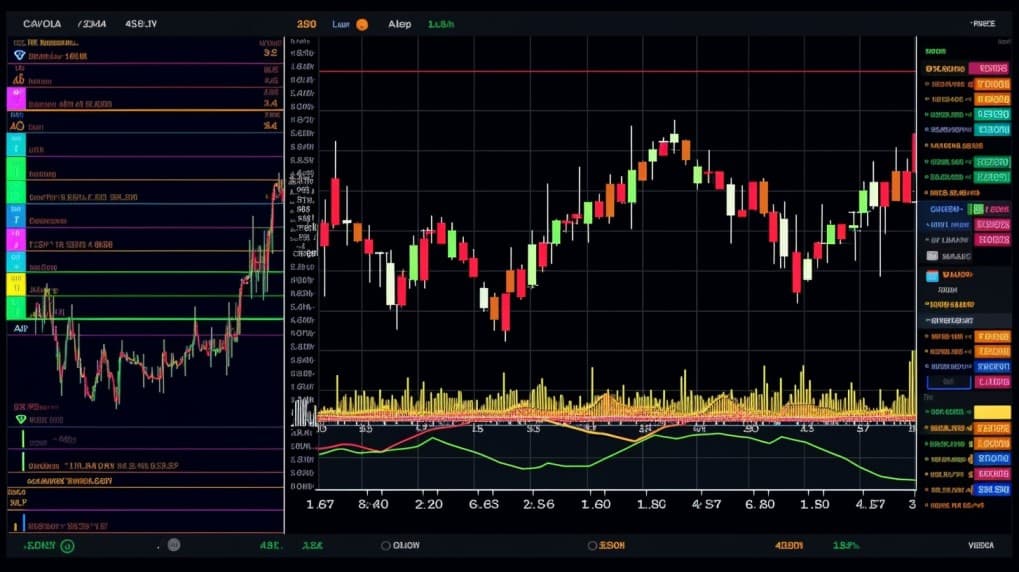
What is XLP ETF?
Exchange-Traded Funds (ETFs) have become increasingly popular among investors due to their flexibility and diversification benefits. One such ETF is the XLP ETF, which focuses on a specific sector of the economy. In this article, we will explore the key features of the XLP ETF and answer some frequently asked questions about this financial instrument.
XLP ETF: An Overview
The XLP ETF is an exchange-traded fund that tracks the performance of companies in the Consumer Staples sector. It aims to replicate the performance of a specific index, such as the Consumer Staples Select Sector Index. By investing in the XLP ETF, investors gain exposure to a diversified portfolio of consumer staples companies, including those involved in food, beverages, household products, and personal care items. This sector is known for its stability and defensive characteristics, making it an attractive option for investors seeking a more conservative investment approach.
To understand more about the XLP ETF, you can visit the official website of State Street Global Advisors, the issuer of the XLP ETF.
Why Invest in XLP ETF?
Investing in the XLP ETF offers several advantages for investors. Firstly, it provides exposure to a wide range of consumer staples companies without the need to purchase individual stocks. This diversification can help mitigate the risk associated with investing in a single company. Additionally, the XLP ETF offers liquidity, as it can be bought and sold on the stock exchange throughout the trading day, just like individual stocks. Moreover, the XLP ETF generally has a lower expense ratio compared to actively managed mutual funds, making it a cost-effective investment option.
 XLP overlap What is XLP ETF?
XLP overlap What is XLP ETF?
How to Invest in XLP ETF?
Investing in the XLP ETF is a straightforward process. Investors can purchase shares of the XLP ETF through a brokerage account. The XLP ETF trades on major stock exchanges, such as the New York Stock Exchange (NYSE), and can be bought or sold using a variety of order types, including market orders and limit orders. It is important to consider factors such as the current market price, bid-ask spread, and any associated brokerage fees when buying or selling shares of the XLP ETF.
To find a reputable brokerage platform to invest in XLP ETF, you can visit websites such as Charles Schwab or TD Ameritrade, which offer a wide range of investment options and resources for individual investors.
Risks and Considerations
While the XLP ETF provides diversification and ease of investment, it is crucial to understand the risks involved. The value of the XLP ETF can fluctuate based on changes in the performance of the underlying companies and the overall market conditions. Additionally, investors should be aware of the specific risks associated with the Consumer Staples sector, such as changes in consumer preferences, regulatory changes, and competitive pressures.
To make informed investment decisions, it is recommended to thoroughly review the prospectus and other relevant information provided by the XLP ETF issuer. Conducting thorough research and consulting with a financial advisor can help investors understand the risks and determine if the XLP ETF aligns with their investment objectives.
In conclusion, the XLP ETF (Exchange-Traded Fund) offers investors a valuable opportunity to gain exposure to the Consumer Staples sector. Throughout this article, we have explored the various features and advantages that make the XLP ETF an attractive investment option.
By investing in the XLP ETF, investors can access a diverse portfolio of consumer staples companies, including those involved in food and beverages, household products, personal care items, and more. This exposure to the Consumer Staples sector allows investors to potentially benefit from the stability and resilience often associated with these types of companies.
Furthermore, the XLP ETF offers investors a convenient and cost-effective way to access this sector. As an exchange-traded fund, it provides the flexibility of buying and selling shares on the stock market, allowing investors to easily adjust their holdings according to their investment goals and market conditions. Additionally, the XLP ETF typically has lower expense ratios compared to actively managed funds, making it an efficient investment choice for those seeking long-term exposure to the Consumer Staples sector.
Disclaimer: This article is for informational purposes only and does not constitute financial advice or investment recommendations.
Source 1:XLP issuer website
Source 2: Reuters article about XLP
XLP quote and analysis
Discover the top holdings, correlations, and overlaps of ETFs using our visualization tool.
Our app allows you to build and track your portfolio.
To learn more about the XLP Consumer Staples Select Sector SPDR Fund, access our dedicated page now.
FAQ
What does XLP mean?
XLP is the ticker symbol representing the Consumer Staples Select Sector SPDR Fund, an exchange-traded fund (ETF) that focuses on companies operating in the consumer staples sector.
What is the XLP ETF?
The XLP ETF is an exchange-traded fund that aims to track the performance of the Consumer Staples Select Sector Index. It provides investors with exposure to a diversified portfolio of consumer staple companies.
What stocks are in XLP?
XLP holds a variety of stocks from the consumer staples sector. The specific stocks included in XLP can change over time based on the composition of the underlying index and the fund manager's investment strategy.
What is the P/E ratio on XLP?
The price-to-earnings (P/E) ratio of XLP can vary over time based on the underlying stocks' earnings and market prices. To obtain the current P/E ratio of XLP, it is recommended to refer to financial websites, brokerage platforms, or consult with a financial advisor.
What sector is XLP?
XLP is associated with the consumer staples sector. The consumer staples sector includes companies that provide essential products such as food, beverages, household goods, personal care items, and other non-cyclical consumer products.





